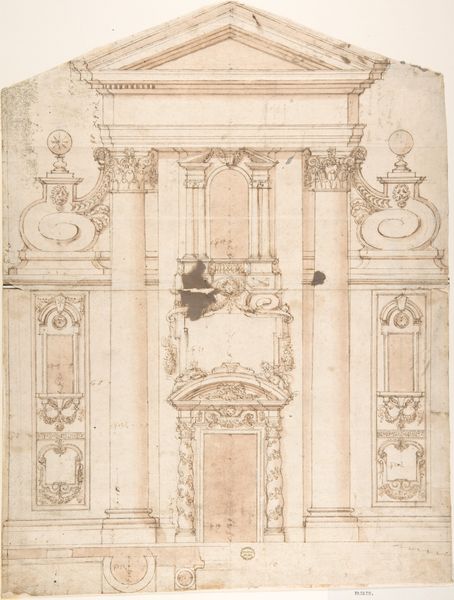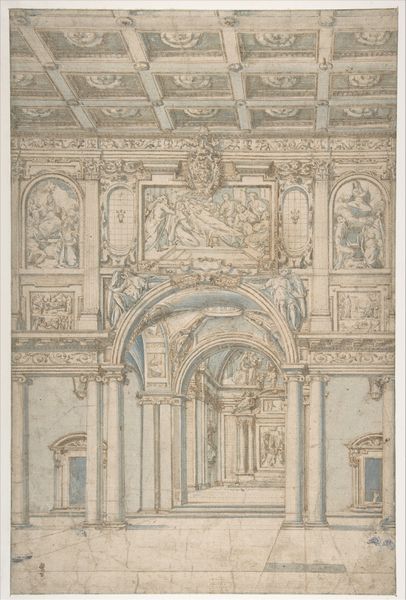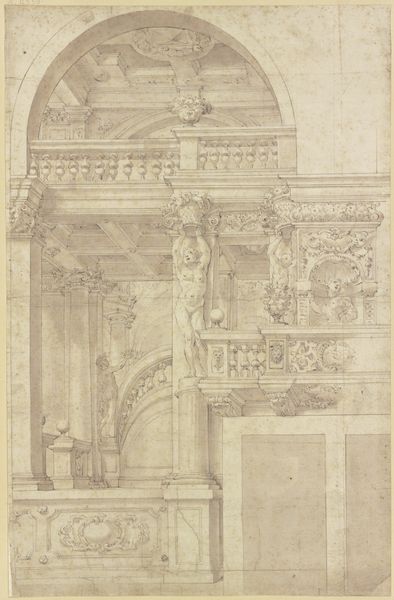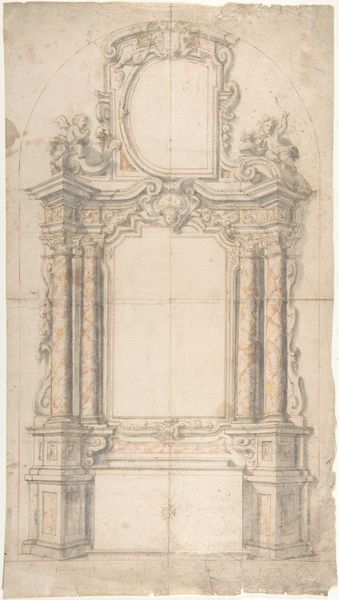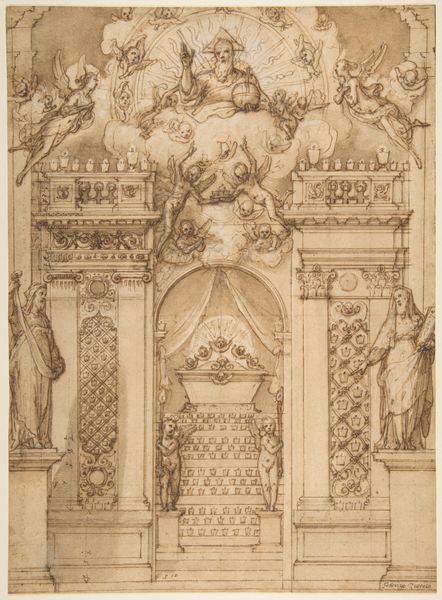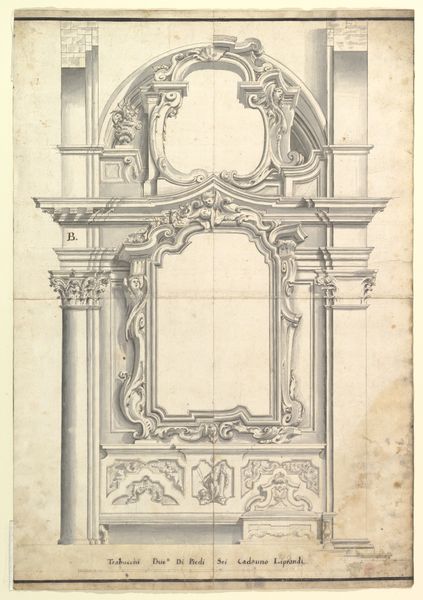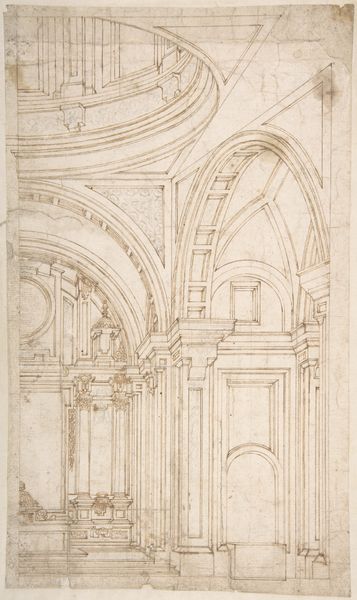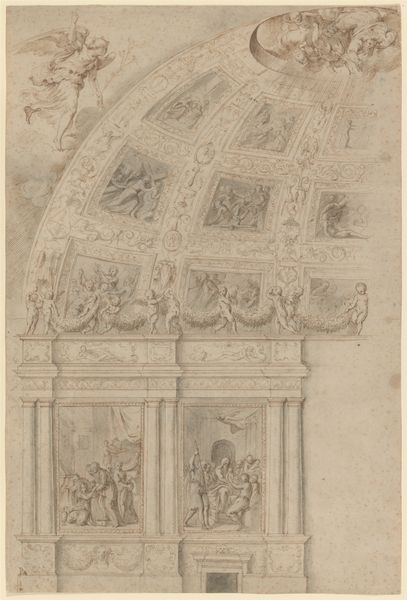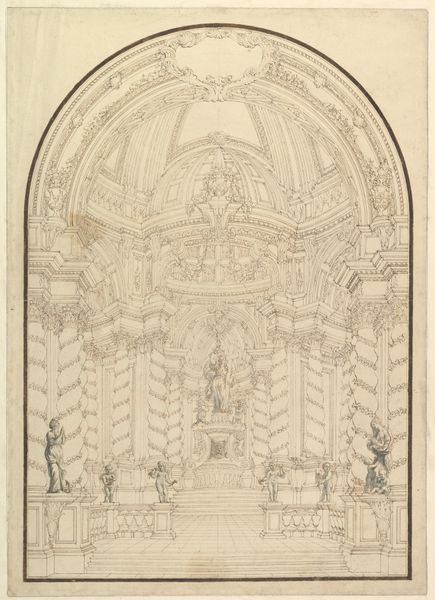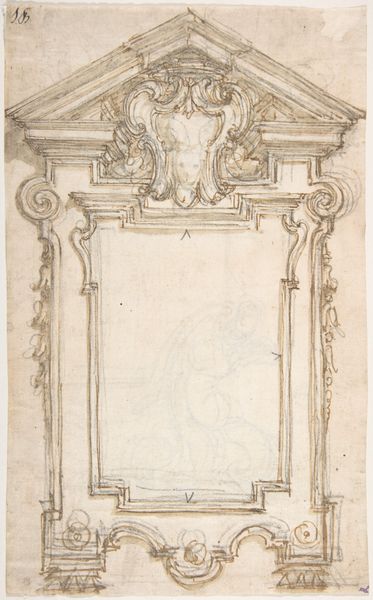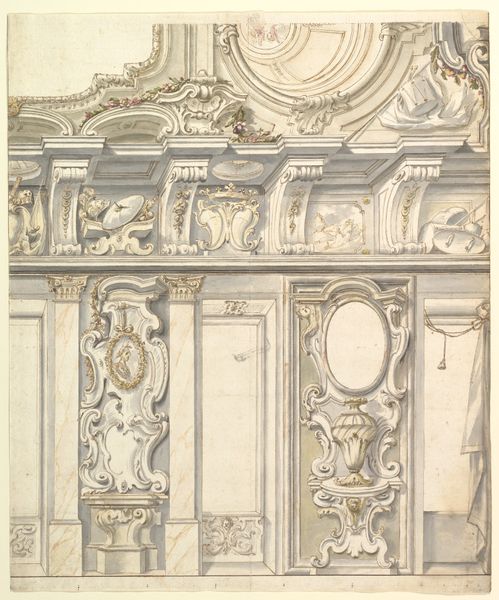
drawing, print, watercolor, architecture
#
drawing
# print
#
light earthy tone
#
landscape
#
11_renaissance
#
watercolor
#
history-painting
#
watercolor
#
architecture
Dimensions: 14-7/8 x 10-1/4 in. (37.8 x 26 cm) : irregular.
Copyright: Public Domain
Curator: The ethereal washes of blue and brown that define this "Project for the Decoration of an Altar" give it a spectral quality. It reminds me of stage design, a backdrop ready for drama. Editor: This work, from the Metropolitan Museum of Art and dating from 1700 to 1780, employs both drawing and printmaking techniques, using watercolor, too. It provides a rare window into the artistic planning of religious architecture. Curator: Seeing it like this, one considers how power and faith were visibly intertwined. The design hints at Baroque grandeur—yet, with subtle, delicate lines, its monumentality feels mediated. Where does devotion intersect with aesthetic power plays? Editor: Well, the drawing’s materials and means of production become vital here. Consider the skilled labor needed to make a project this complex. The choice of watercolor as the medium softens the structure, potentially indicating less emphasis on overt domination and perhaps an increased appeal to individual piety. Curator: I think so. I’m drawn to how its delicate landscape-inspired elements contrast against the severity we normally expect from altars of the period. I mean, how does this shift affect gendered access to devotion? Editor: This is all preliminary, of course—not the completed altar. So, there are layers of artisanal process, involving draftsmen, architects, perhaps even the clergy. Also, it would be great to trace if watercolor renderings signaled budgetary changes to material finishes and to see, even, if these impacted how successfully this was made. Curator: These are the nuances. This "Project" opens a dialogue. I notice it’s anonymous. How does our experience differ if we had the name of the designing individual? Does the architecture stand for something in that regard, or, does it fade more smoothly into the system of power at the time? Editor: It truly compels you to investigate the artist's context and process, inviting discussions on the intersectionality of production, faith, labor and impact.
Comments
No comments
Be the first to comment and join the conversation on the ultimate creative platform.
